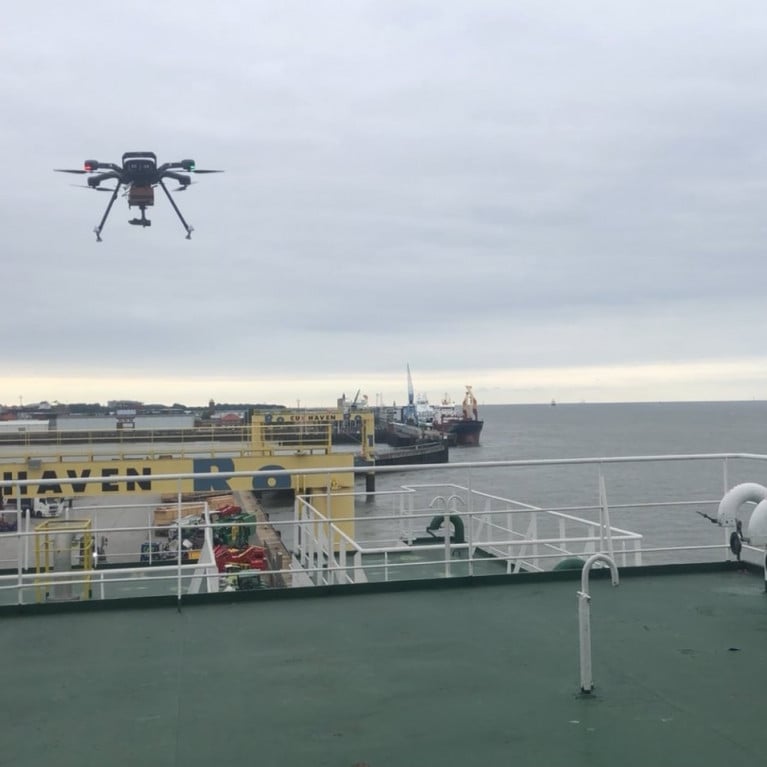Displaying items by tag: Drone Docking
DFDS and Upteko have after a year-long collaboration resulted in the ferry and logistics giant being the first in the world to introduce a drone system as part of equipment on commercial ships.
The contract has been signed with the Copenhagen based DFDS which is now implementing the new drone system on freight-ferry Selandia Seaways which Afloat adds operates the North Sea route between Immingham, UK and Cuxhaven (see photo) in Germany.
”Operating our vessels in a safe and efficient manner is crucial in our line of business. With our new drone decision support system, we are pushing the boundaries for how technology can add value in terms of safety and optimisation of operations,” says Rune Keldsen, EVP and Chief Technology Officer.
Eyes in the sky
The drone system is connected to advanced navigation and includes a charging station, lidars, a thermographic sensor and a high definition RGB camera. The drone is flying 120 meters up in the air, live streaming in real-time to the captain on the bridge, using a neural network to post-process the streamed video and calculating the distance between objects around the vessel. The drone will accurately provide the captain with important input acting as the captain's eye in the sky on departure and arrival in the ports and narrow waters.
Today, decisions are based on human observations and GPS, but the drone will in the future function as a decision-support system. The drone system will help optimize operations onboard the ships with its supportive function to the vital human perspective.
Safety is vital
Looking into the future, the drone system will also be able to act as an extra set of hands when a person is in distress or if a fire breaks out onboard the ship. If a person falls overboard, the drone can fly back and locate the person using thermal and ordinary cameras.
Mads Bentzen Billesø, Head of Innovation and Partnerships at DFDS, said “Using drone technology to support operations onboard our ships have been an area we have been investigating with great interest. We are proud of this collaboration which will push large-scale utilization of drones to solve a number of tasks. This will in time result in improved efficiency and, more importantly, improved safety onboard our ferries.”
The development of this new technology has been supported by Danish Maritime Fund and ShippingLab/Innovation Fund Denmark.
























































